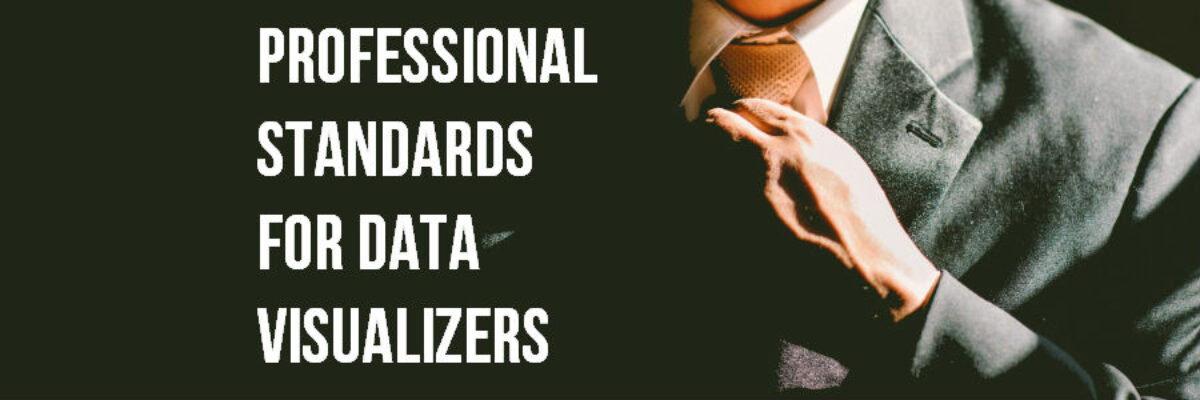Professional Standards for Data Visualizers
To my fellow data visualizers:
As a field grows in size and maturity, there comes a time to set forth professional standards of conduct, to help us both align our practices and communicate to our potential clients that we are an organized and respectable group of colleagues.
Standards need at least semi-consensual development (and I’ll kick things off here) as well as a credible association to call home. In lieu of a true professional association for data visualizers, I want to call upon my colleagues in the American Evaluation Association’s Data Visualization and Reporting Topical Interest Group to lead the charge. I founded the Data Visualization and Reporting TIG several years ago precisely because the excitement about and money to be made visualizing data had us all frothing at the mouth. A set of standards is the next logical step in the sequence of professionalization.
I’ll offer a couple standards to start with, based in experiences I have witnessed over the past year.
Standard: We work for payment at reasonable wages.
We do not work for free. We do not participate in data visualization contests or other seemingly fun activities which, in actuality, solicit work from talented individuals without compensation or even copyright. We do not take on work that compensates less than industry standard. While the range is broad and there is no intention to price-fix, we look to the compensation paid by places like the American Evaluation Association or The Evaluators Institute, or sister fields like graphic design, as guidelines for how we should price our own work. Assuming work for less than the industry standard fosters a race to the bottom culture. As a professional field, refusing low pay or no pay work elevates everyone.
Standard: We develop original material and clearly cite sources for borrowed material.
We do not plagiarize other people’s work. We can and should be inspired by others in our field. However, we build off of their ideas, rather than duplicate them, and we apply those new ideas to our own datasets, use our own color schemes, and ultimately develop visuals that are not recognizably similar to our original inspirations. Even then, we give credit to our original inspirations. While it is incredibly easy to obtain visuals from quick internet searches and our favorite blogs, we do not adopt others’ visuals without permission from the original creator. No matter whether we are keynoting a conference or simply presenting to our internal team, we abide by copyright regulations and, if applicable, the narrow permissions allowed under Fair Use. As a professional field, we protect our own interests and honor the hard work of our peers when we develop original materials and clearly cite our sources. We monitor this standard and its adherence for those who are employed under us. No more blaming the intern.
Standard: We respect the dignity and self-worth of those providing the data we visualize.
It’s all too easy to forget that there are humans behind the data. How we represent those humans can perpetuate injustice or support their integrity. We maintain respect for those who provide the data we visualize because they have given of themselves, usually without compensation, and we make something out of it, for compensation. We work to ensure, to the best of our ability, that our visuals are used in ways that align with our values.
Our field is rocketing in growth and I couldn’t be more excited about where it takes us all. Let’s go there on the same page, arm in arm, as professionals.
I sincerely hope the leadership of the Data Visualization and Reporting TIG adopts the responsibility for working from this starting point and developing a fuller set of standards to guide our practice.
I love you all so much,
Stephanie
PS. What other standards would you like to see added to guide our practice? Leave a comment below.
PPS. The impetus for this open letter came from a shared lunch with the dear Michael Quinn Patton and he deserves credit (and all your adoration).


